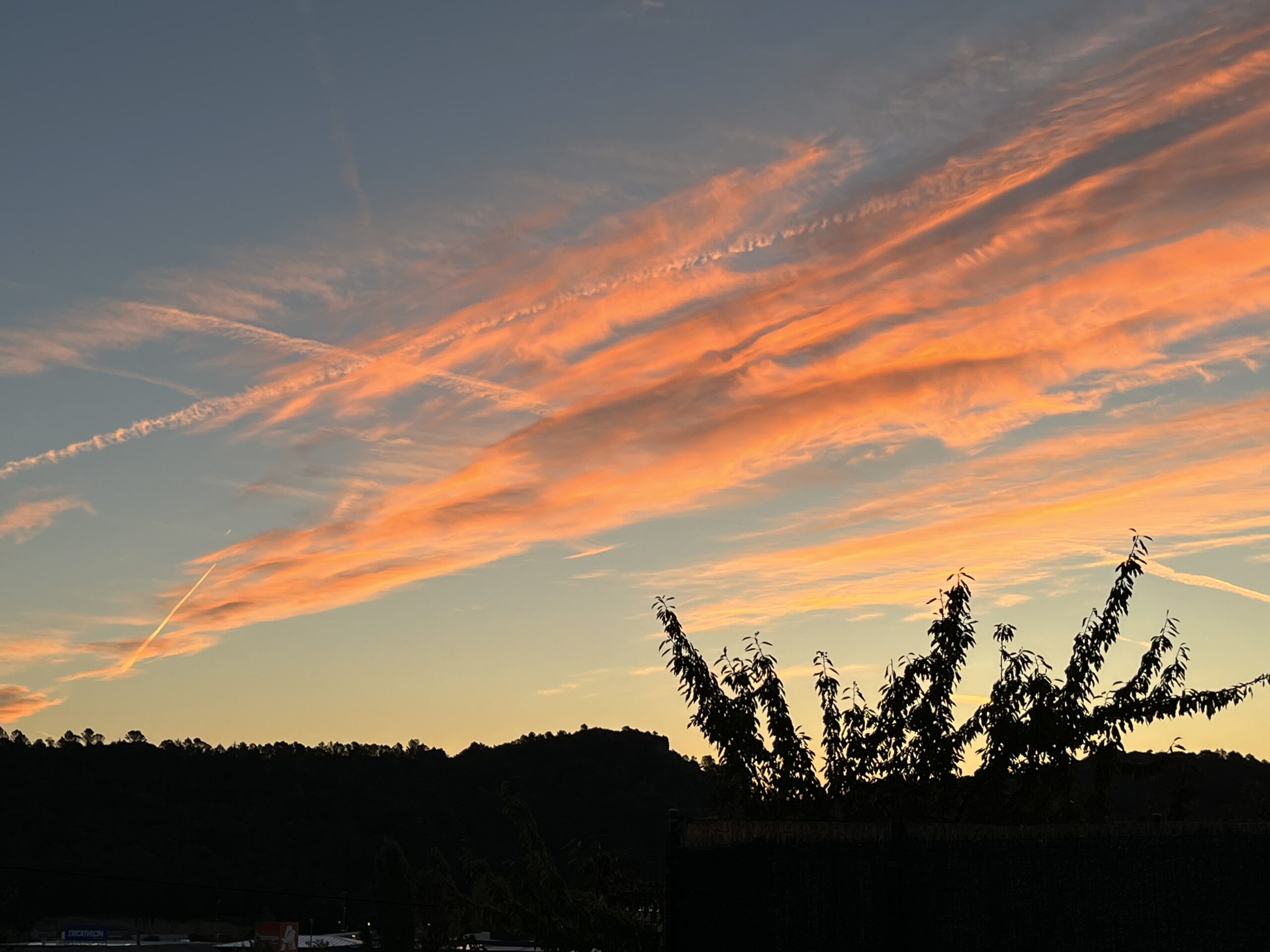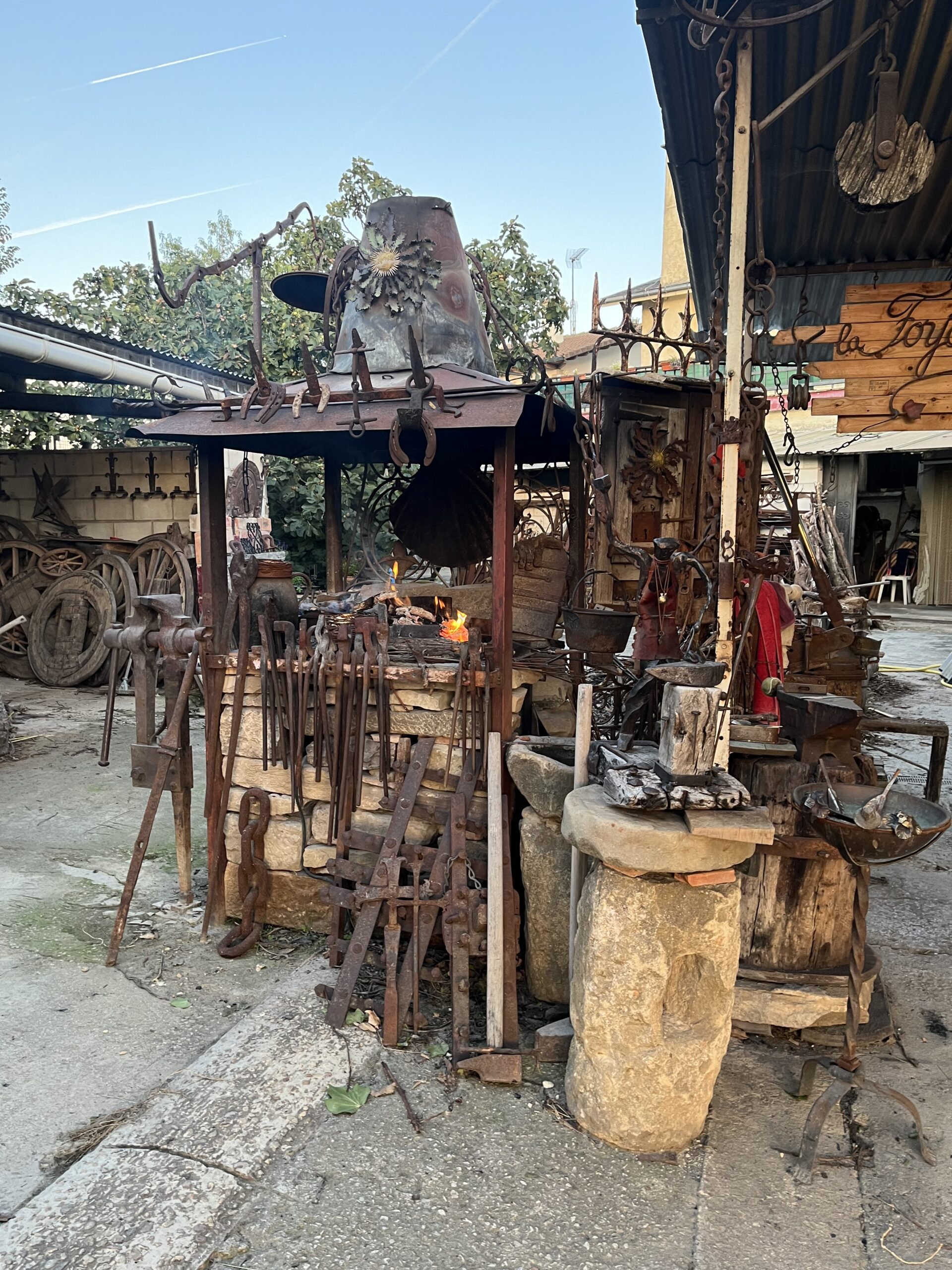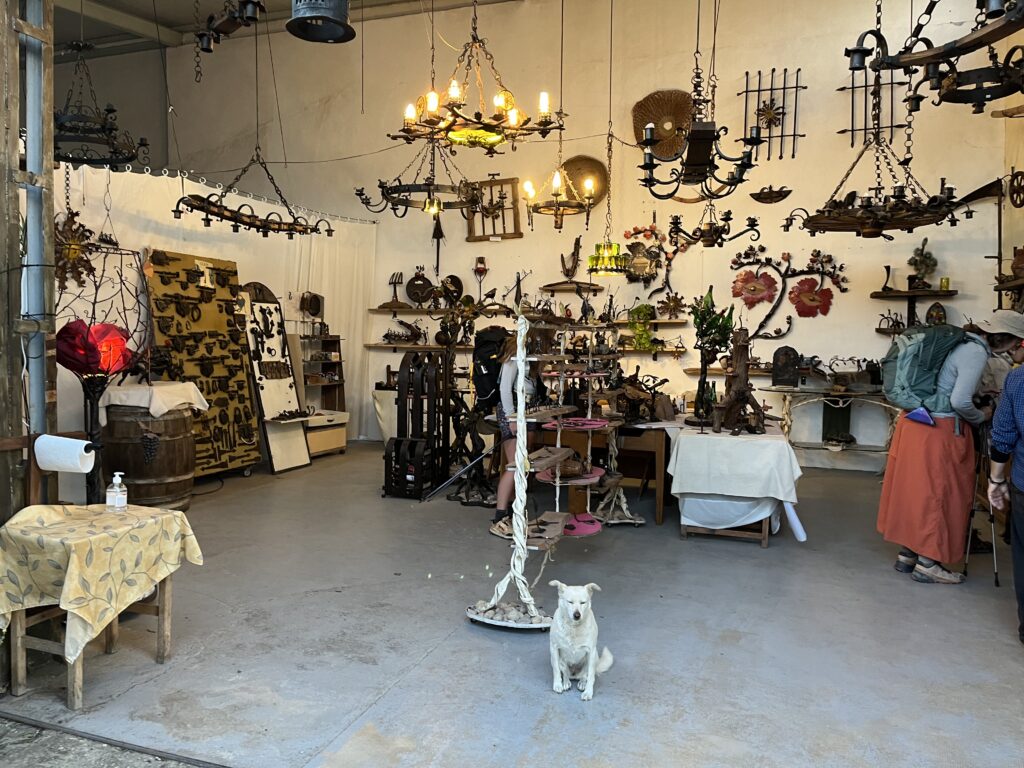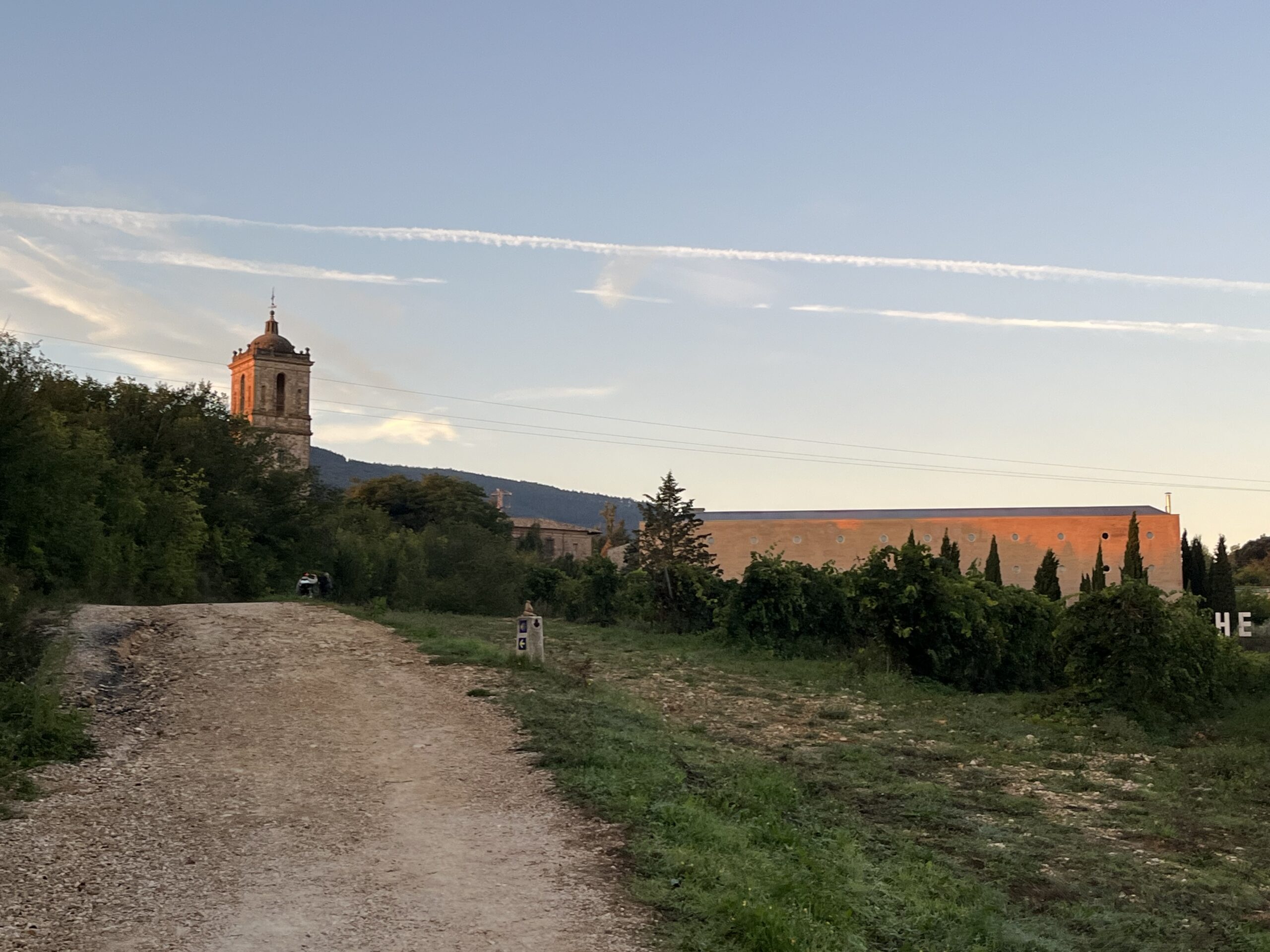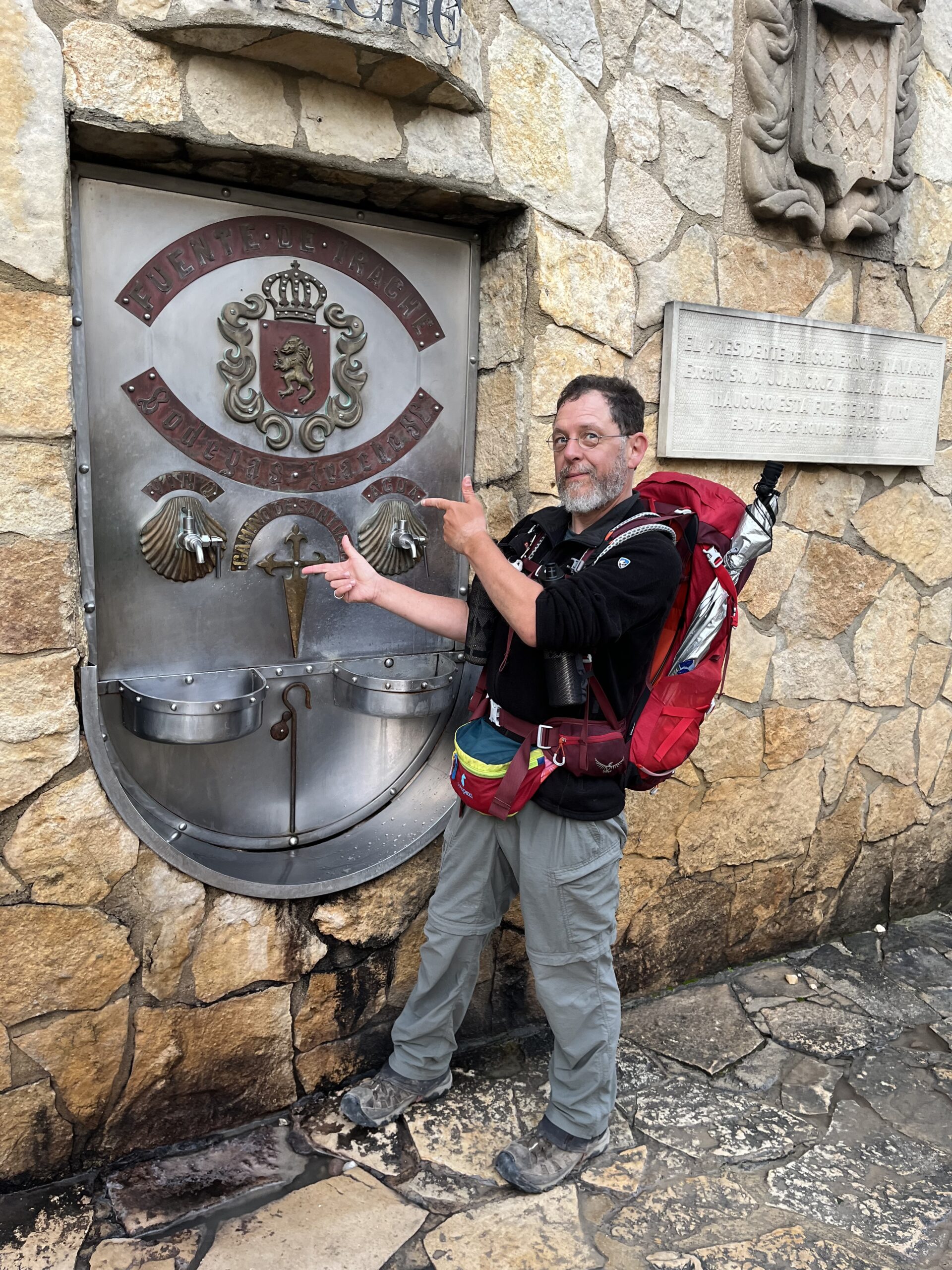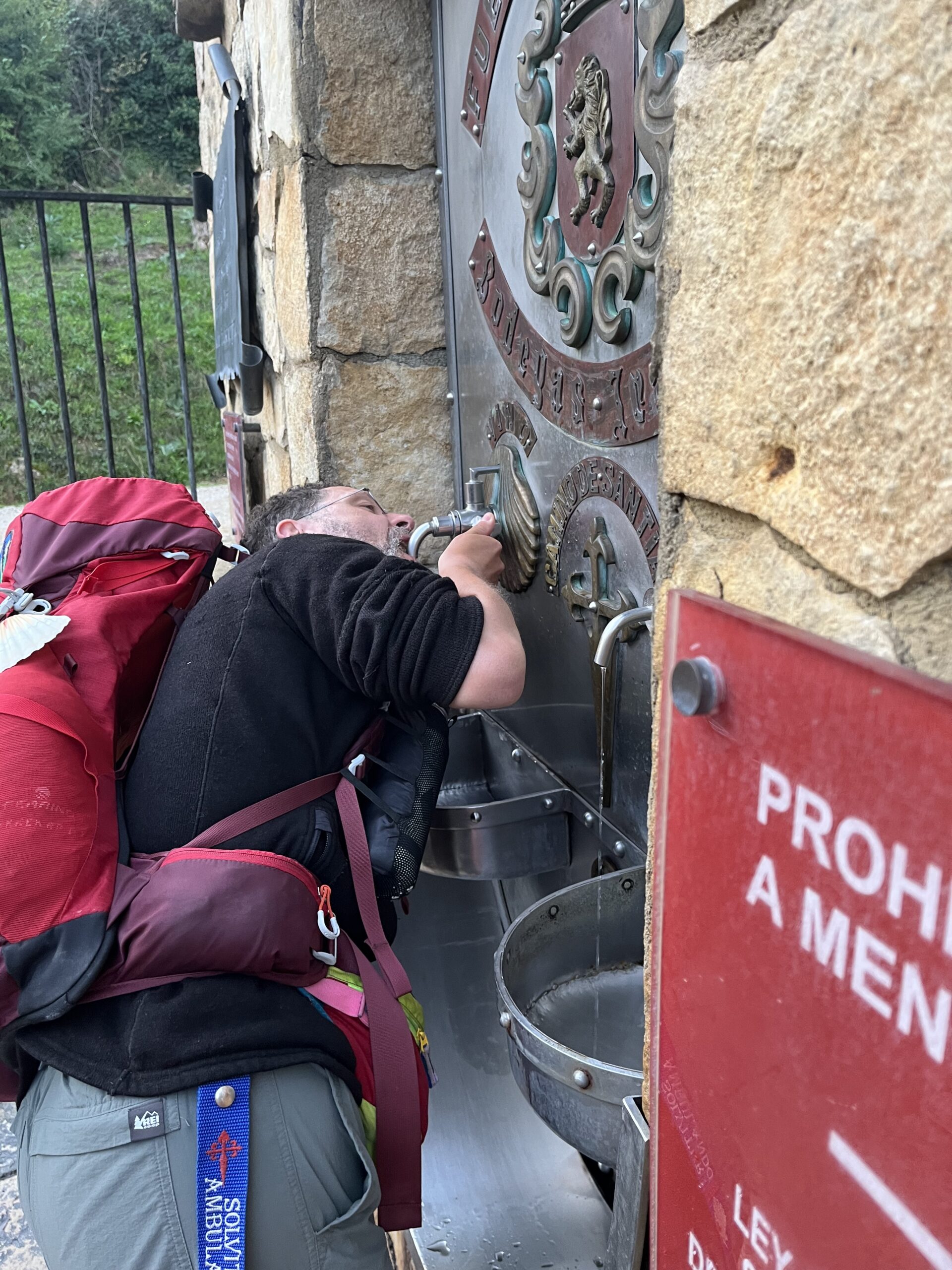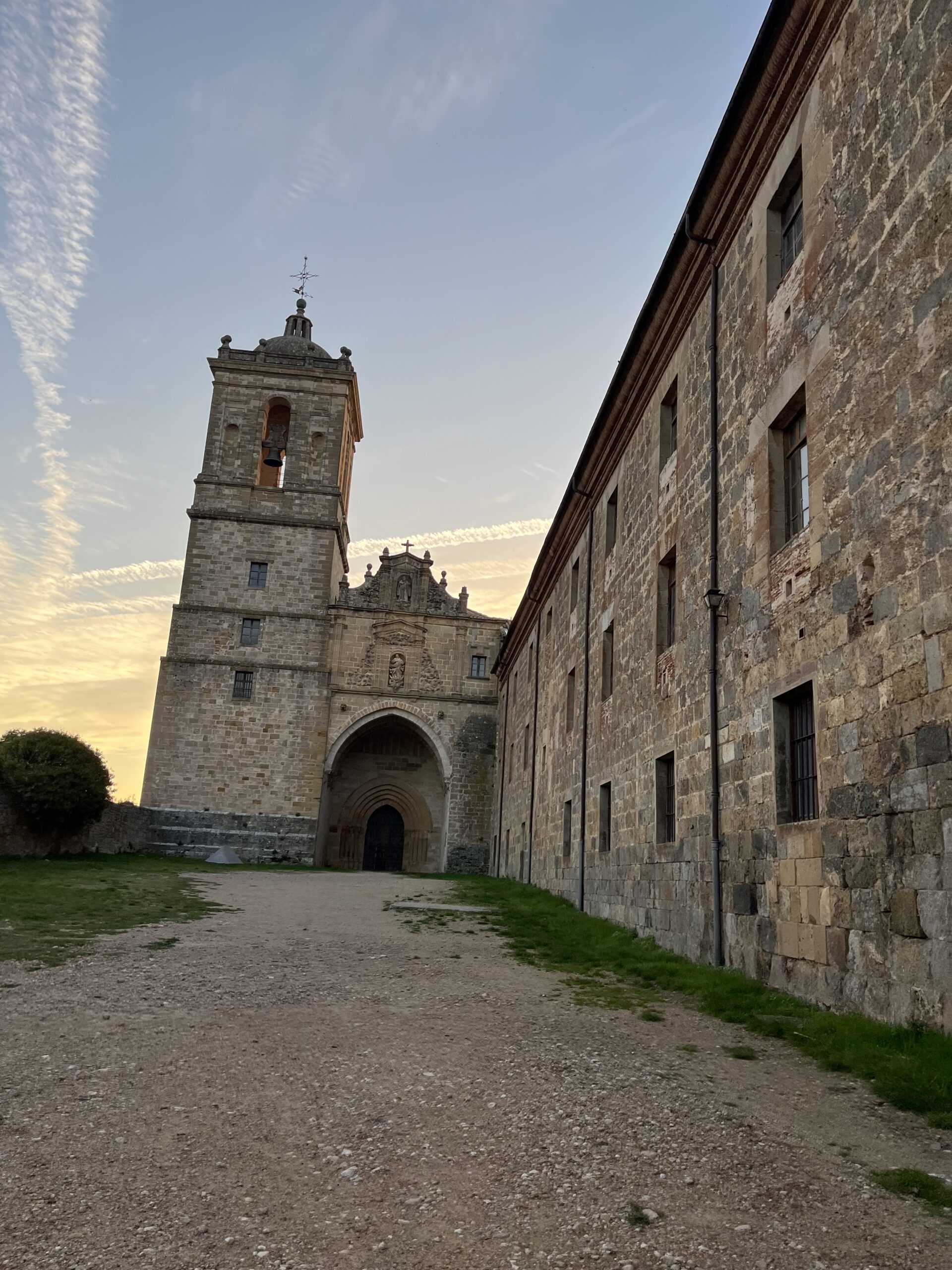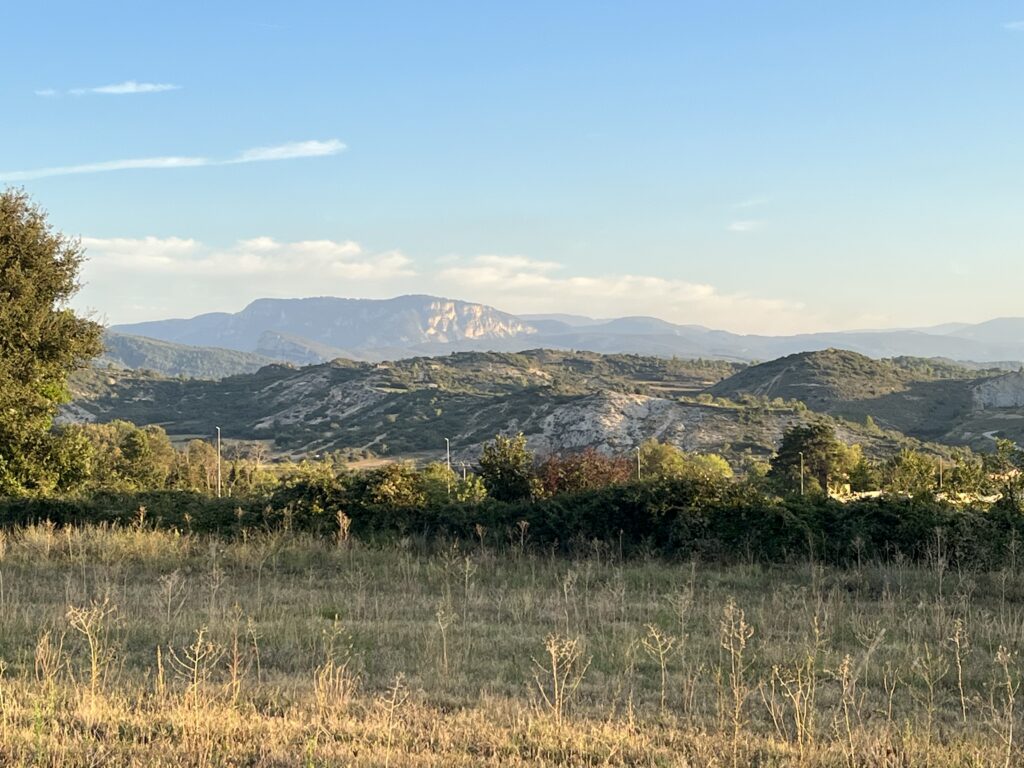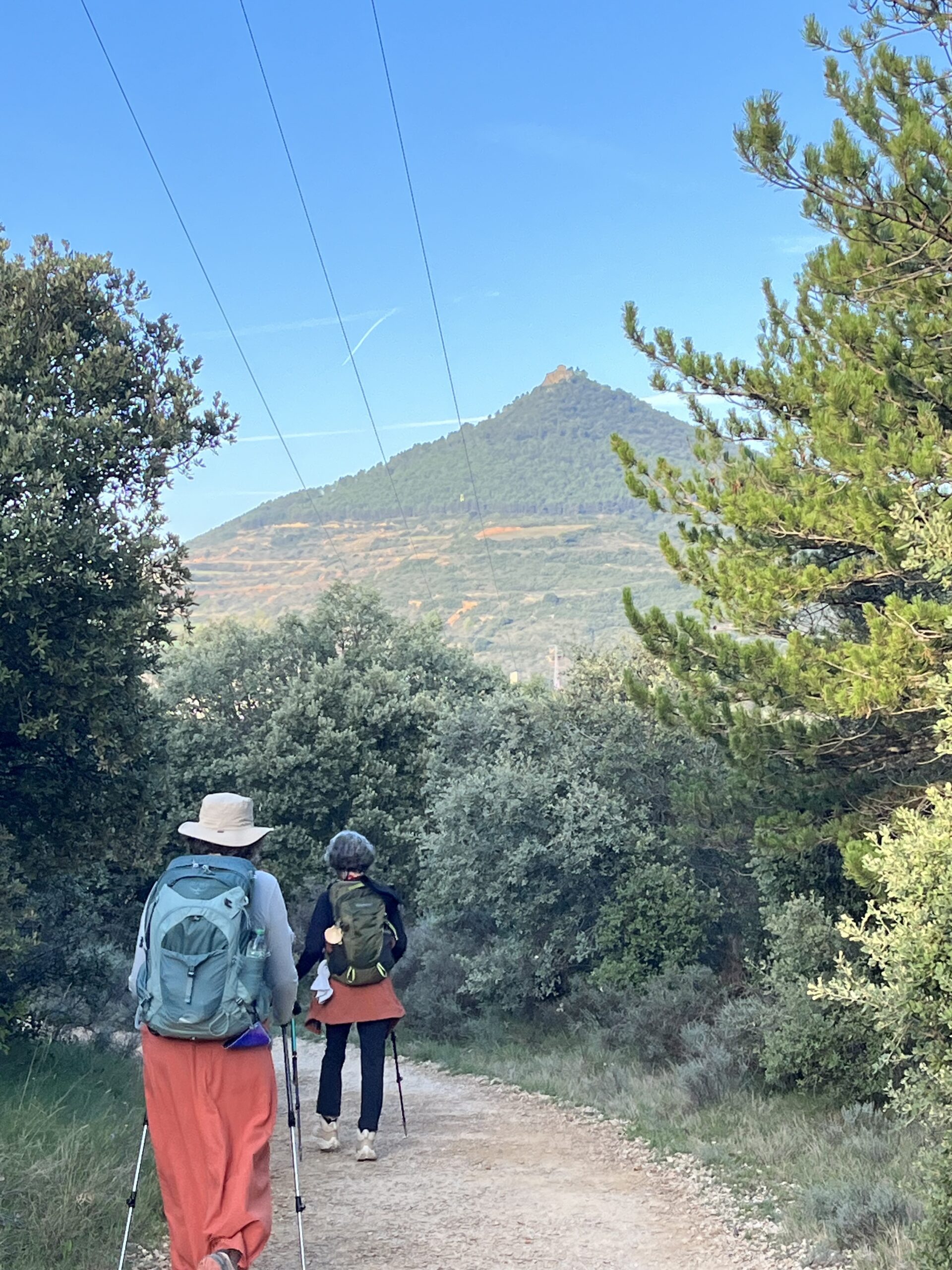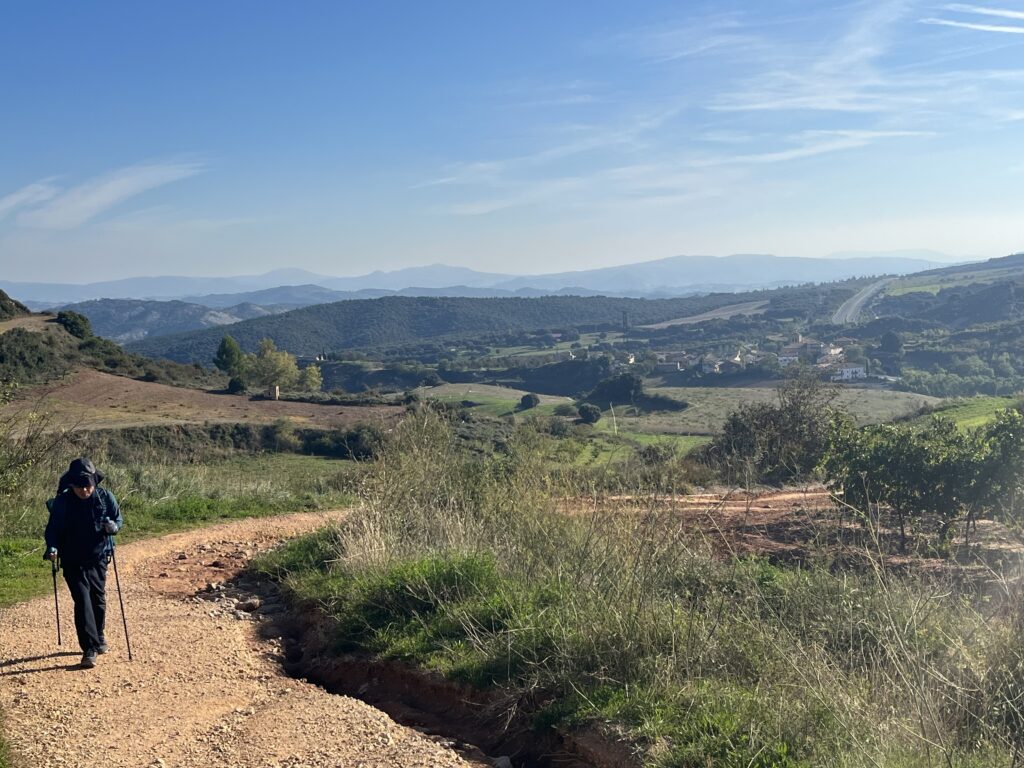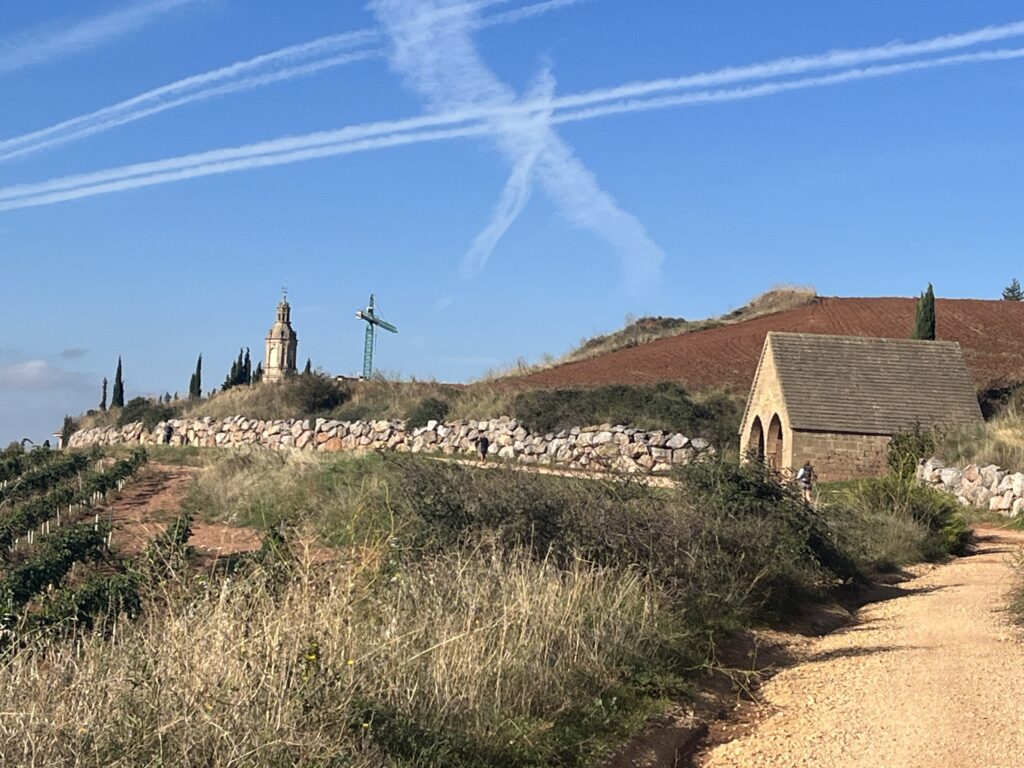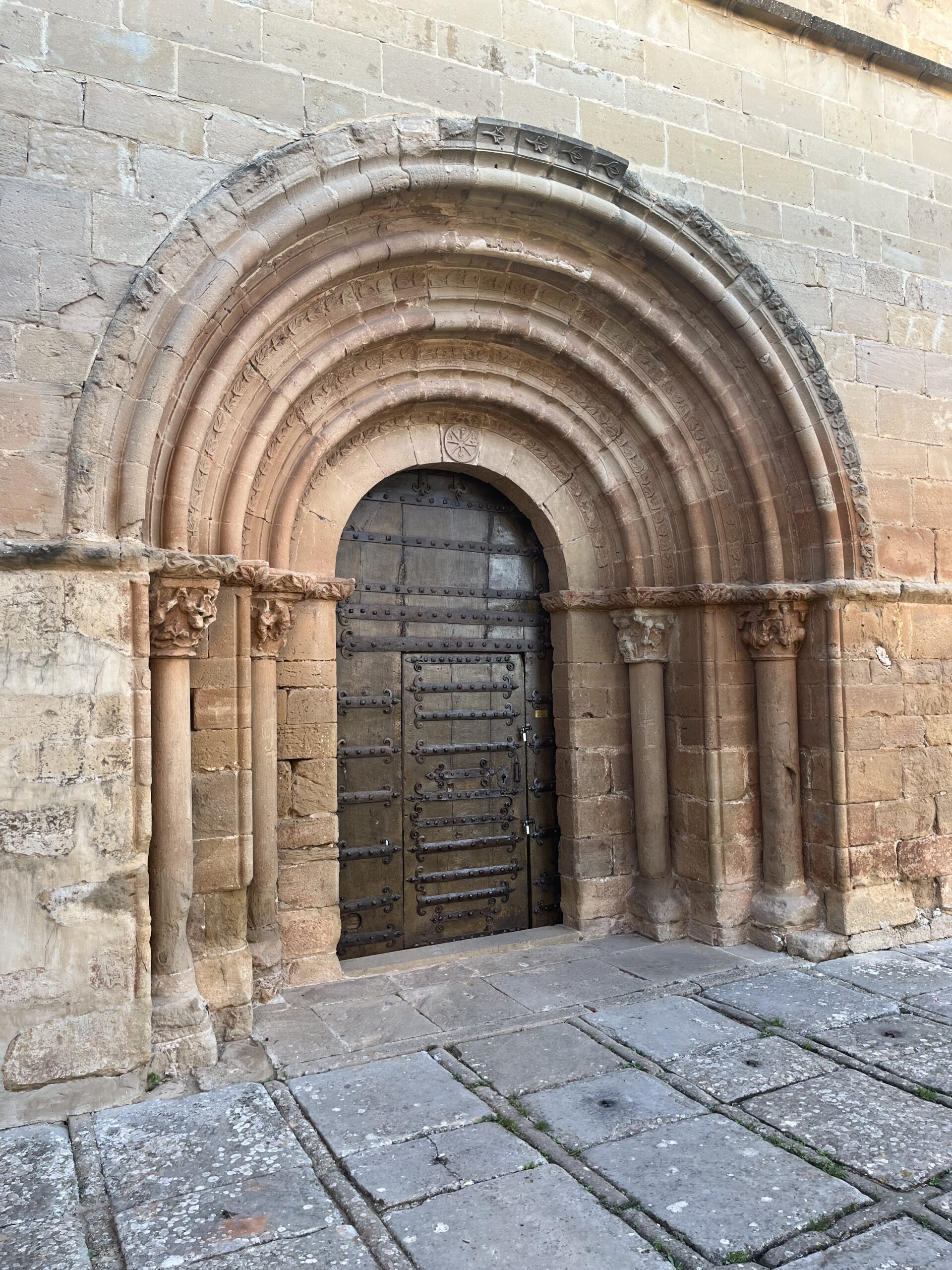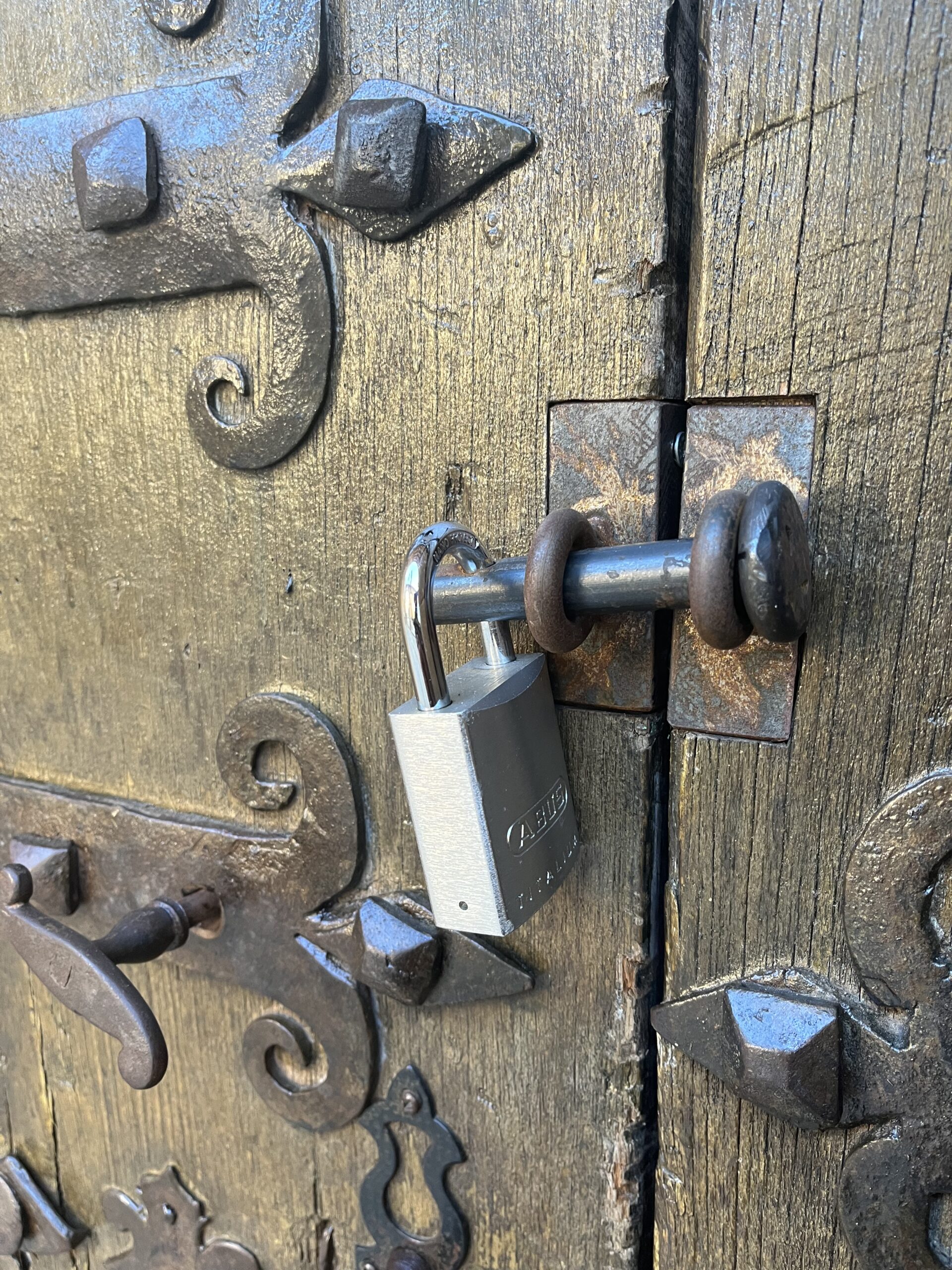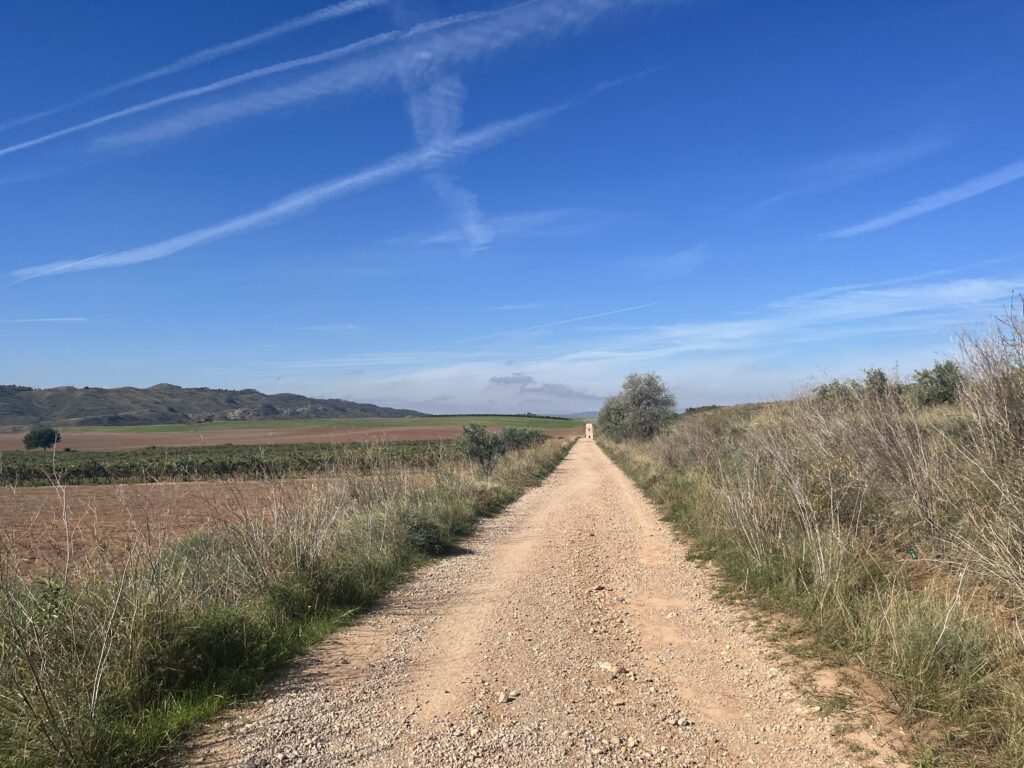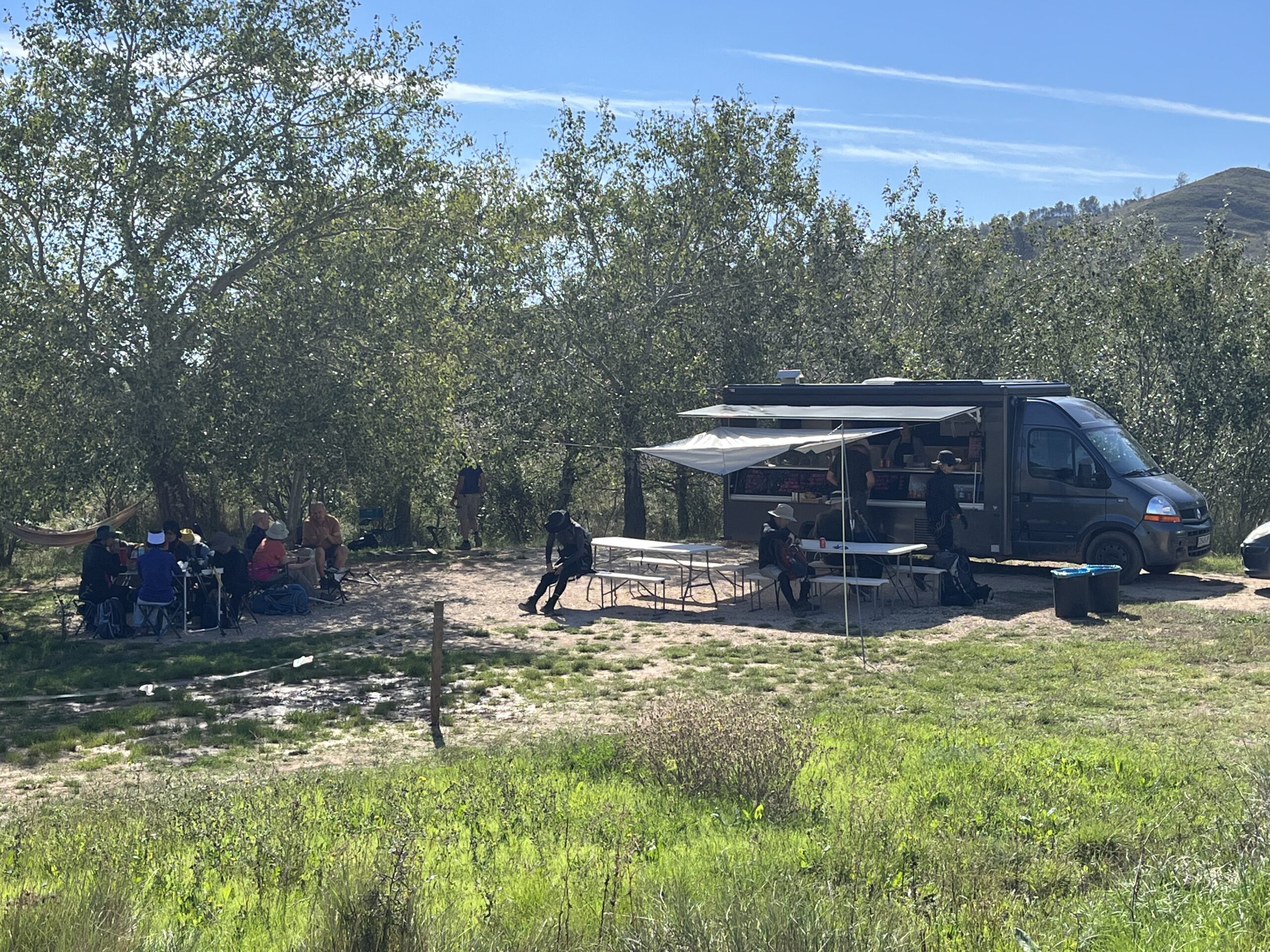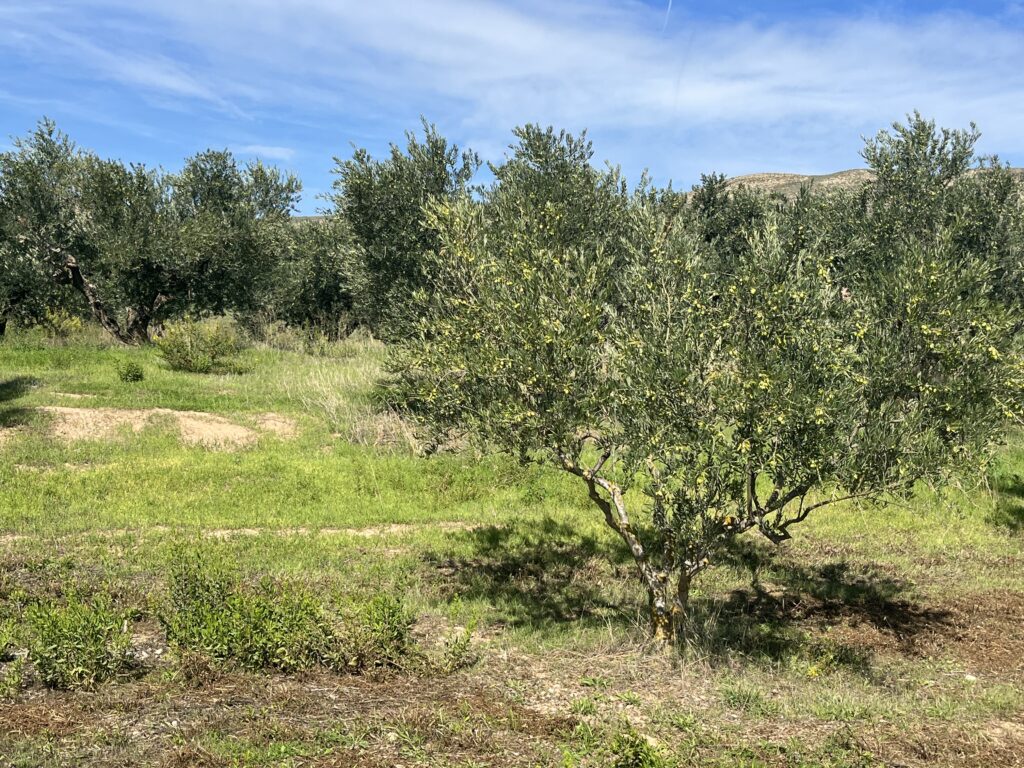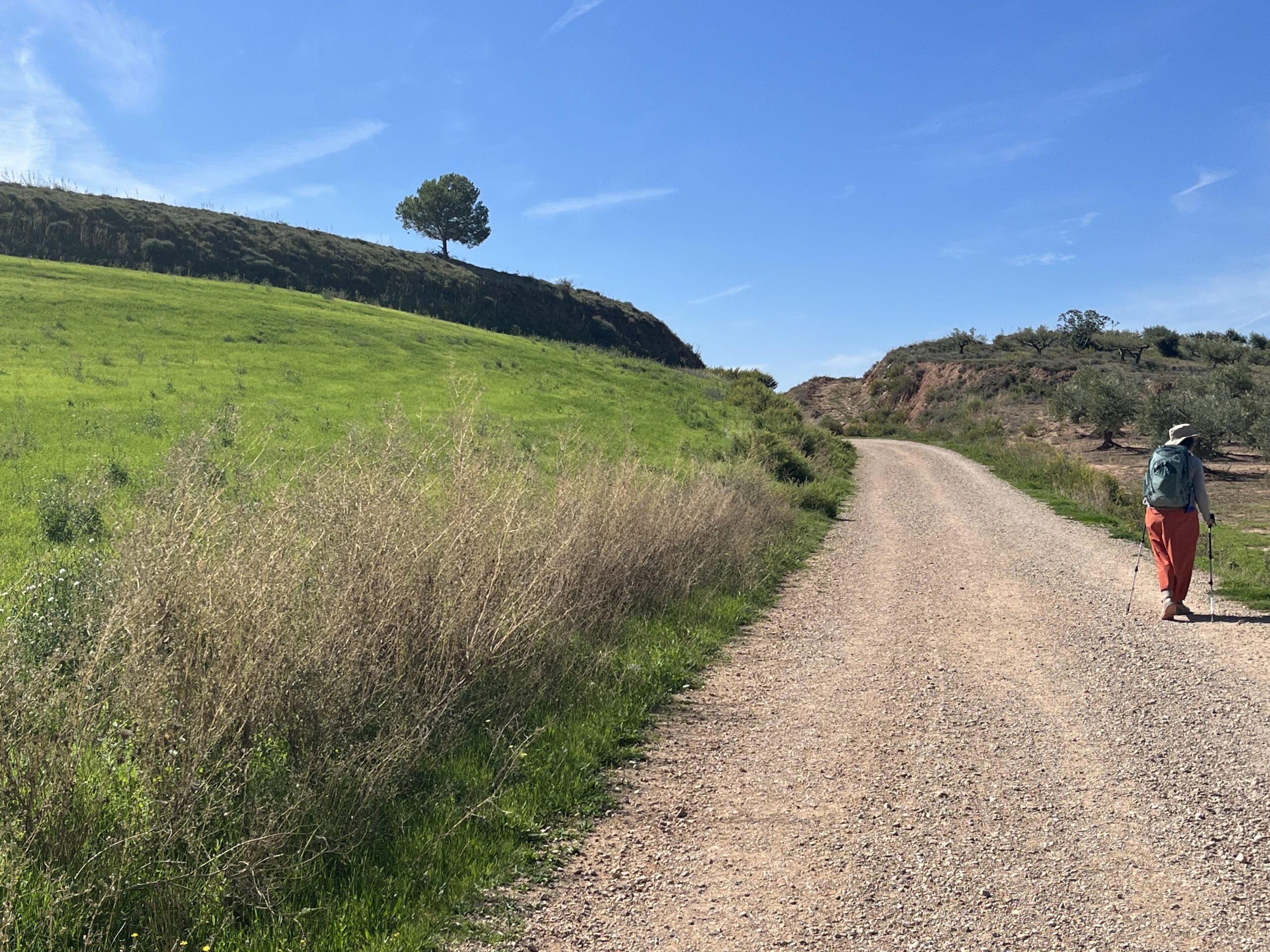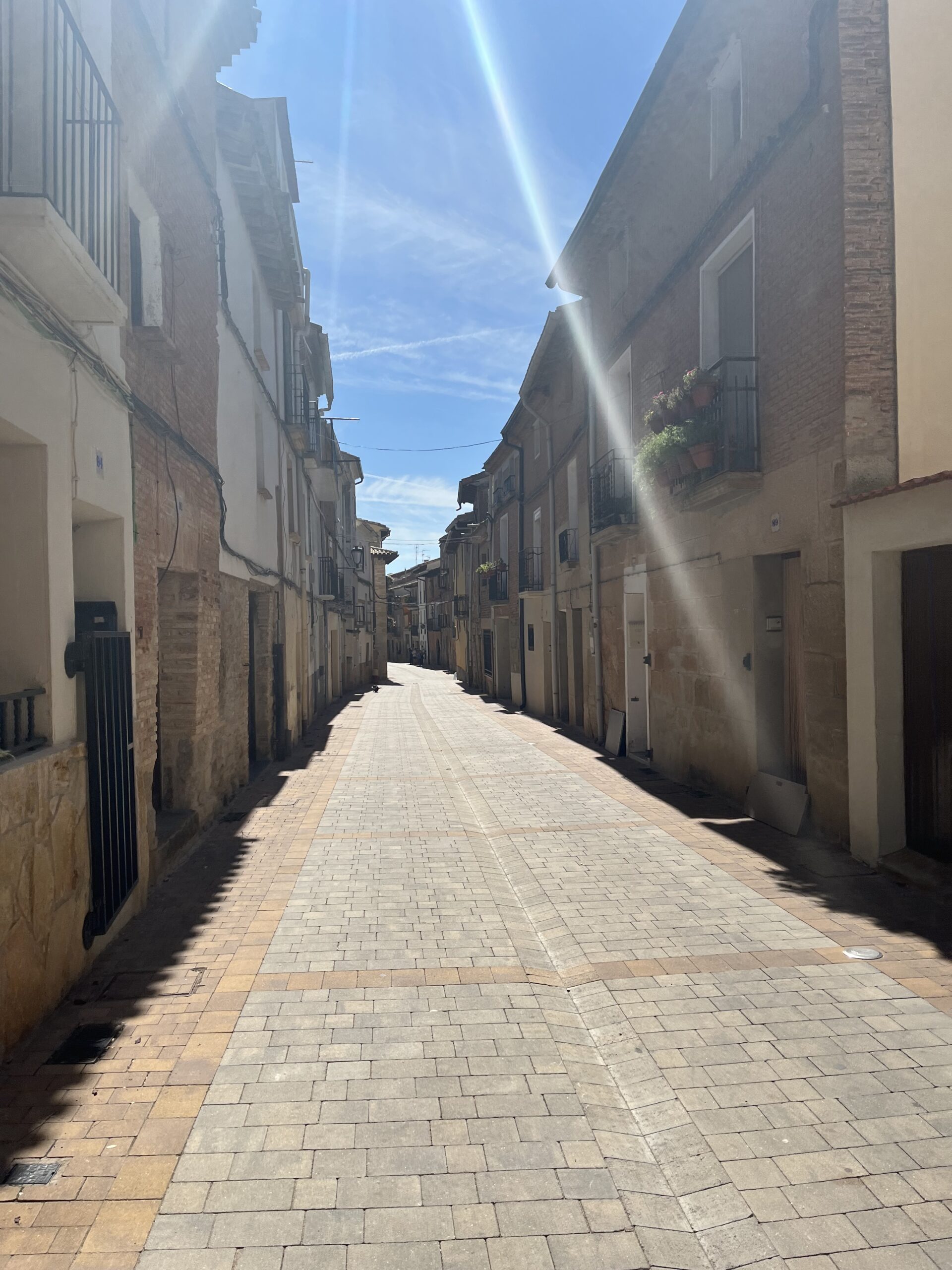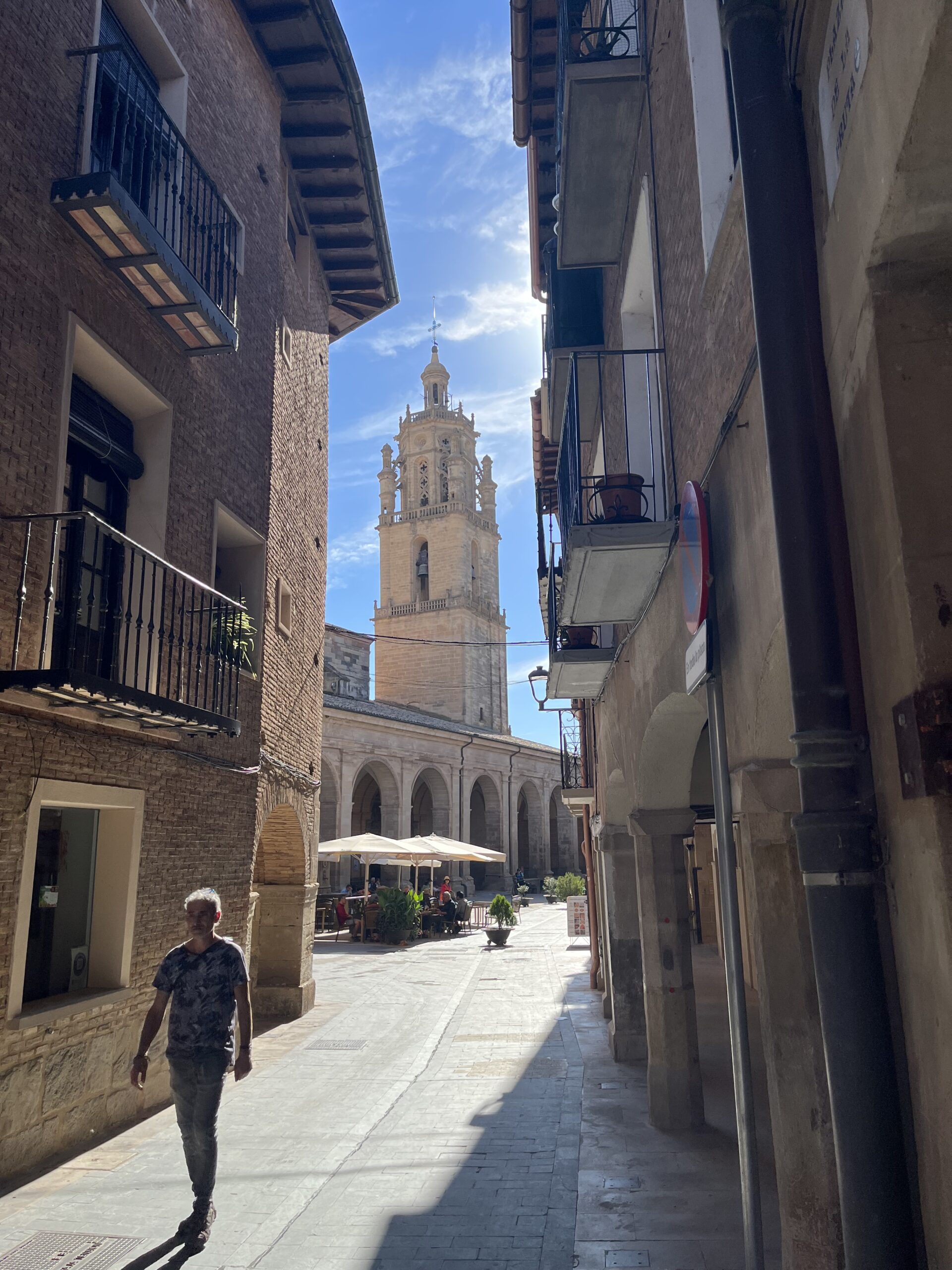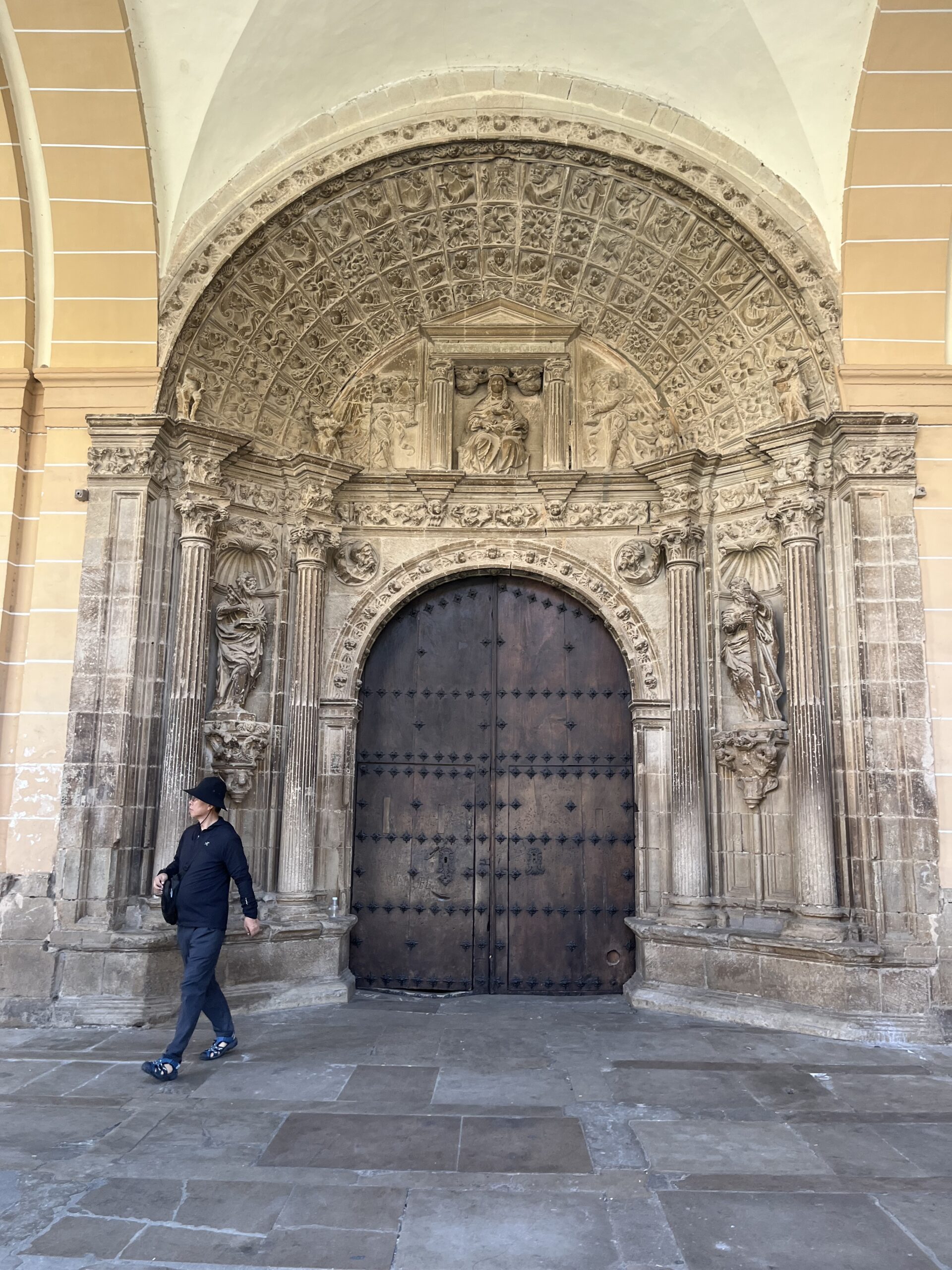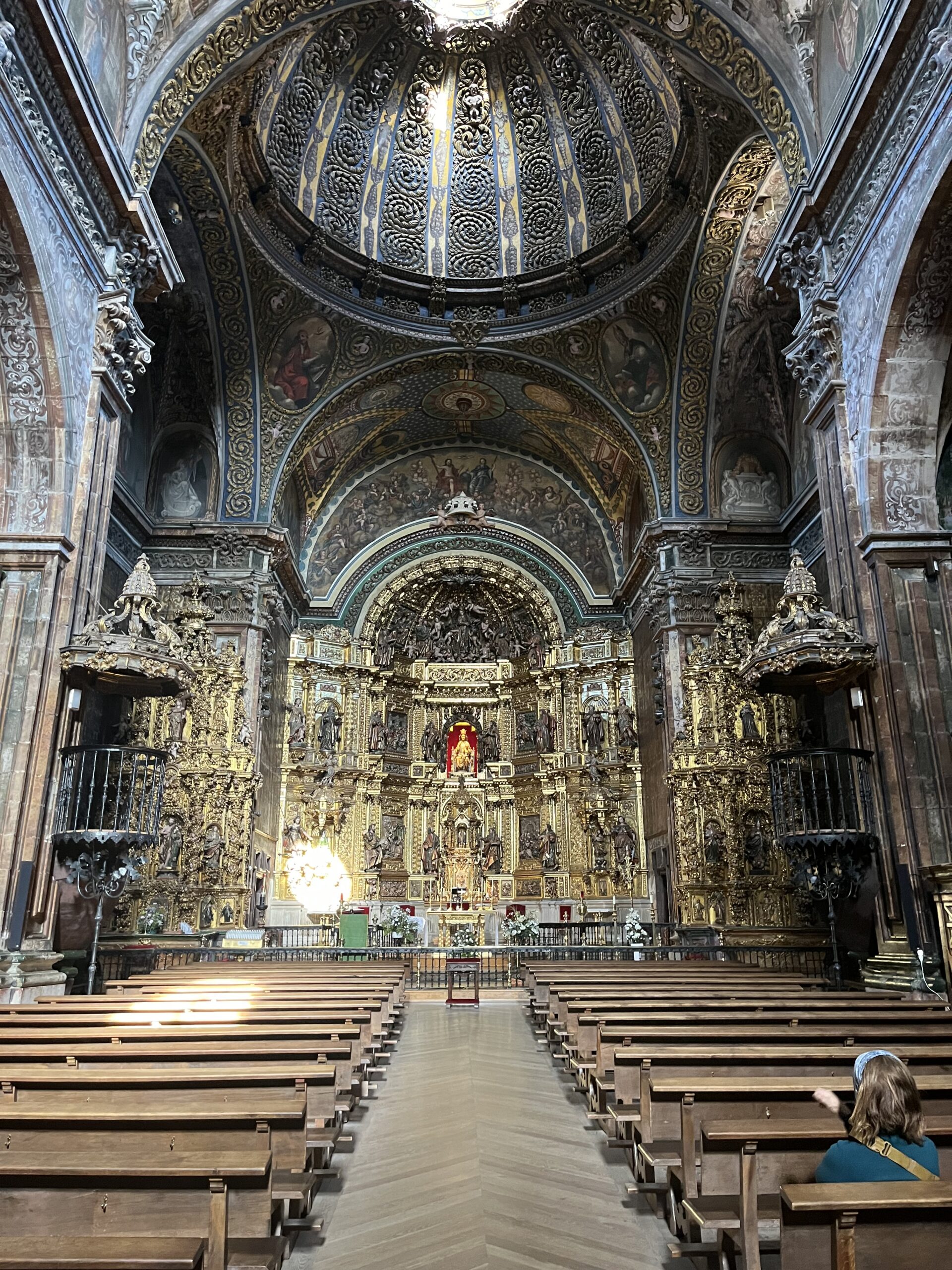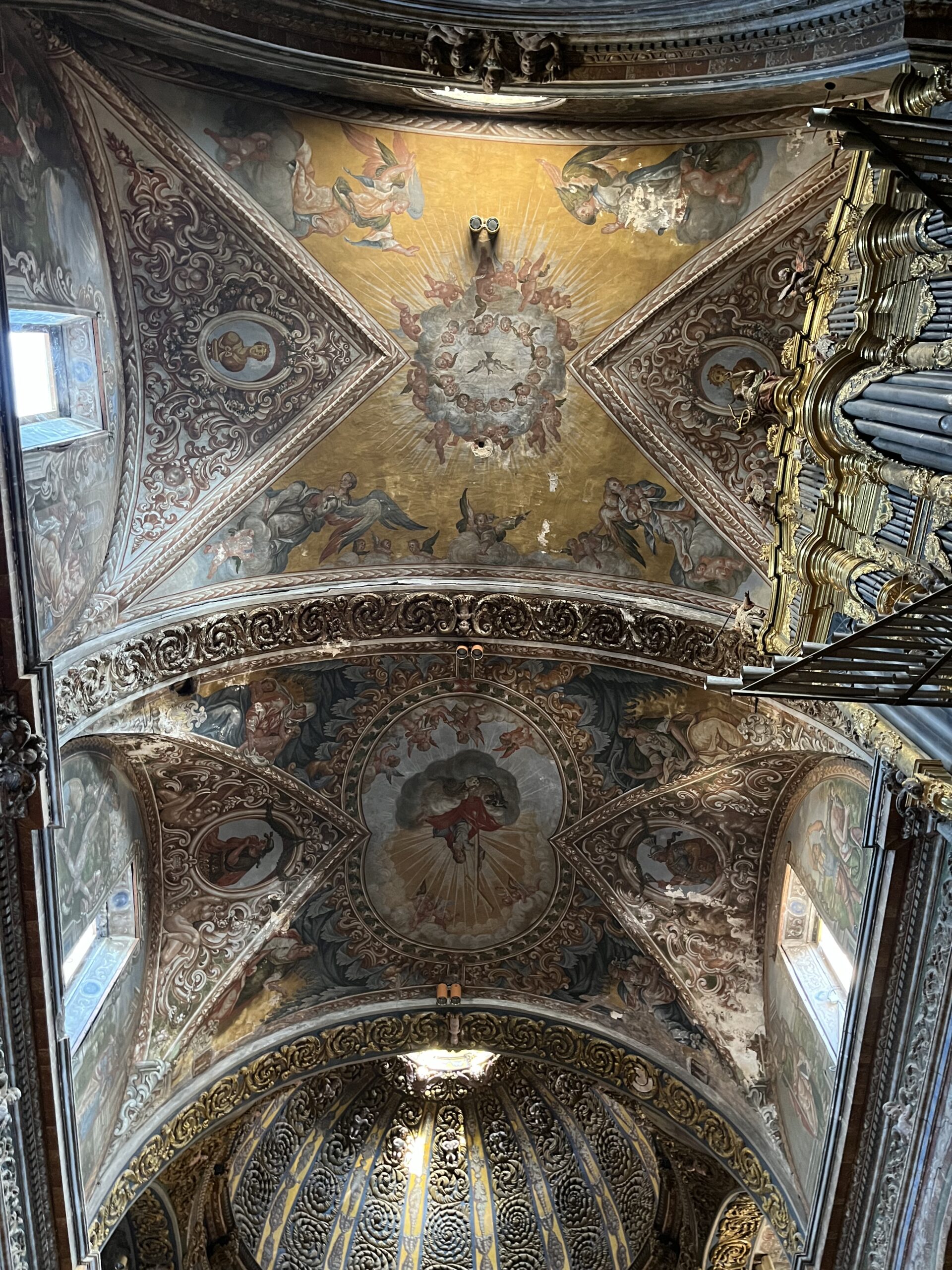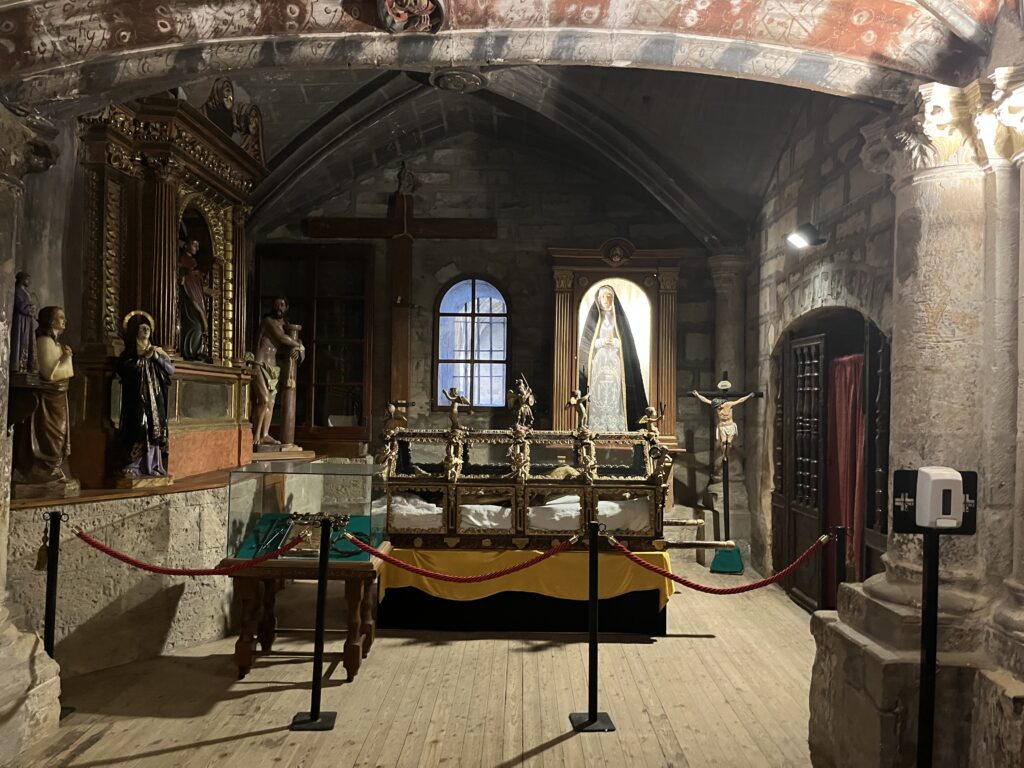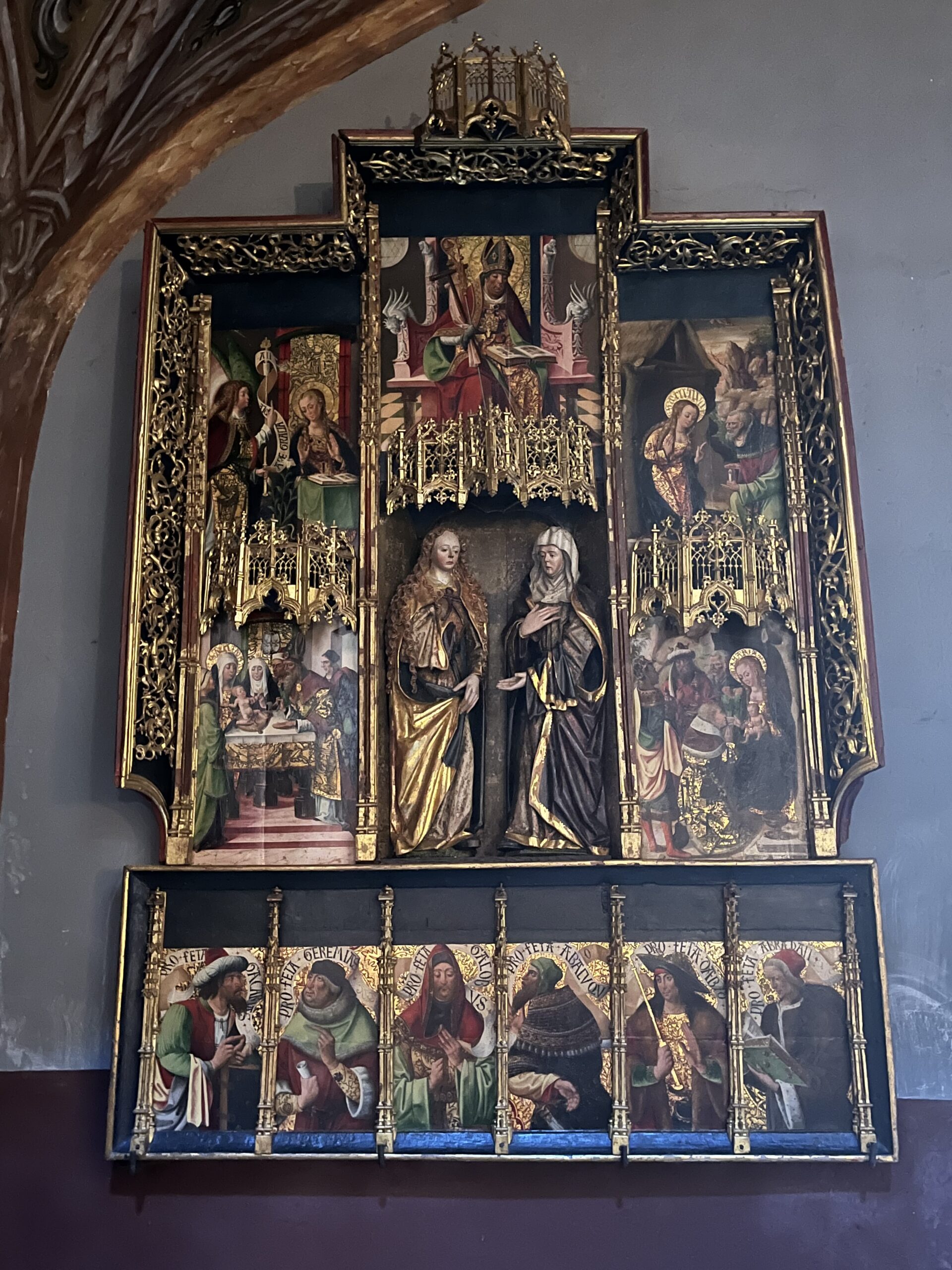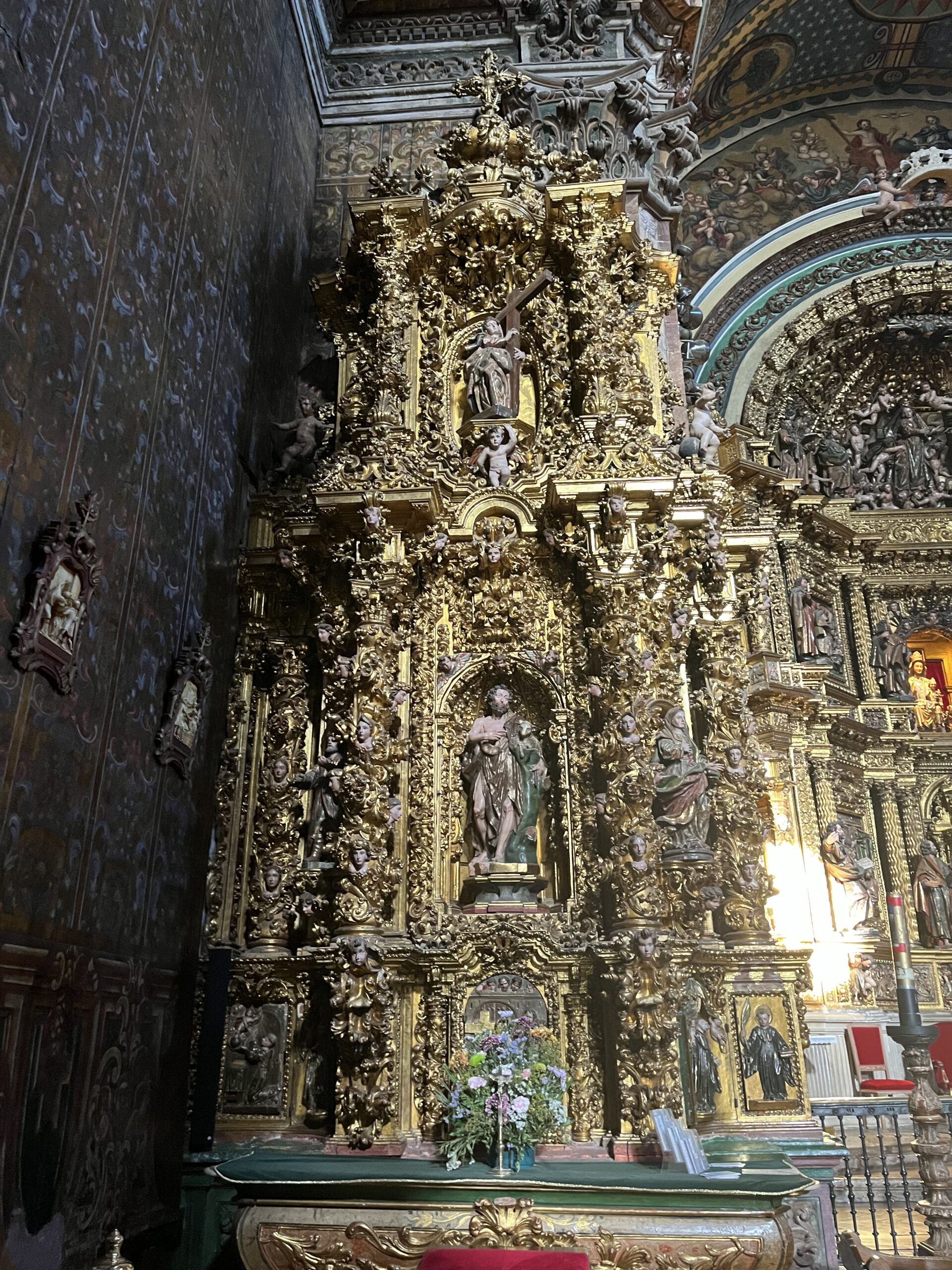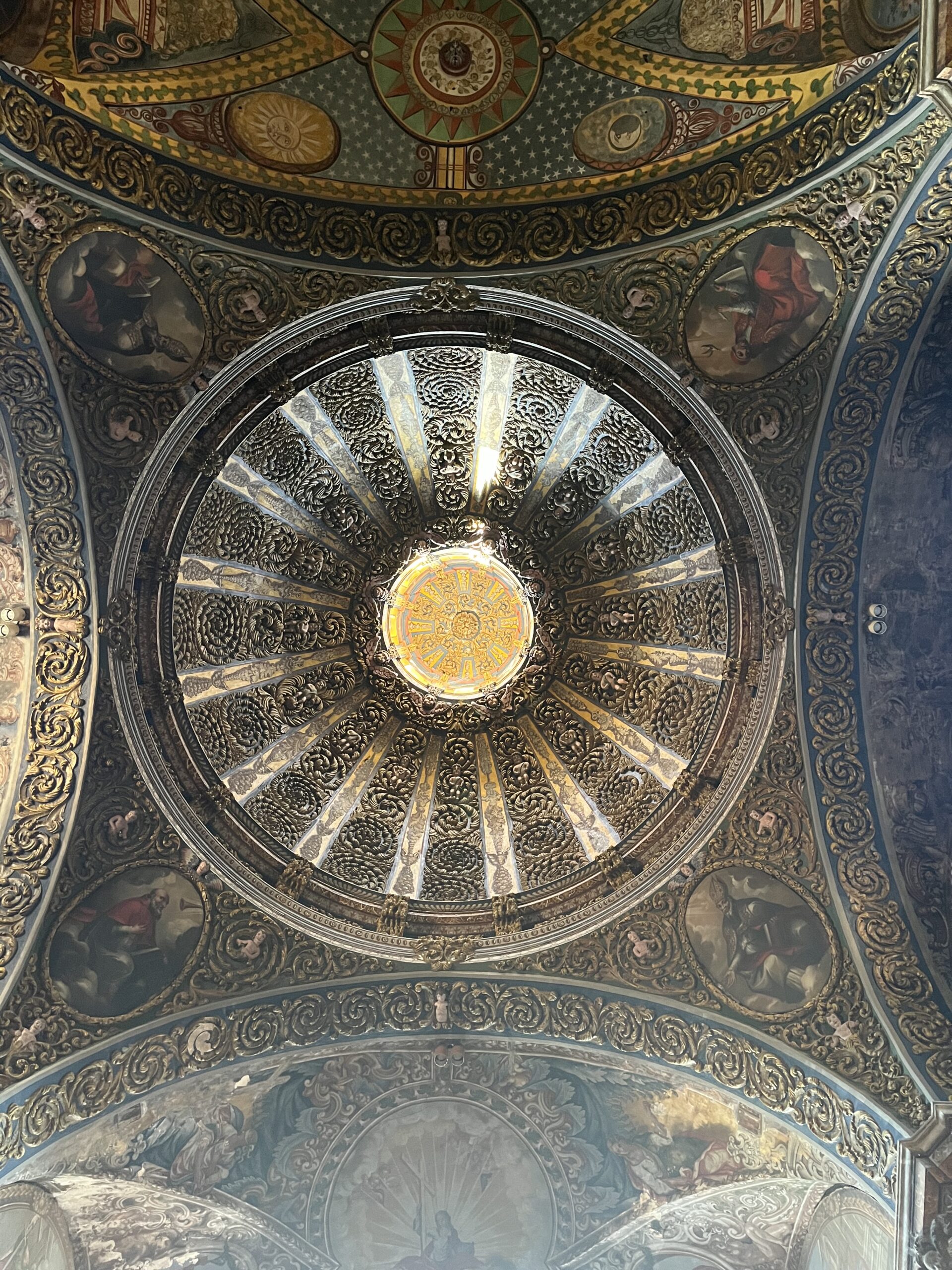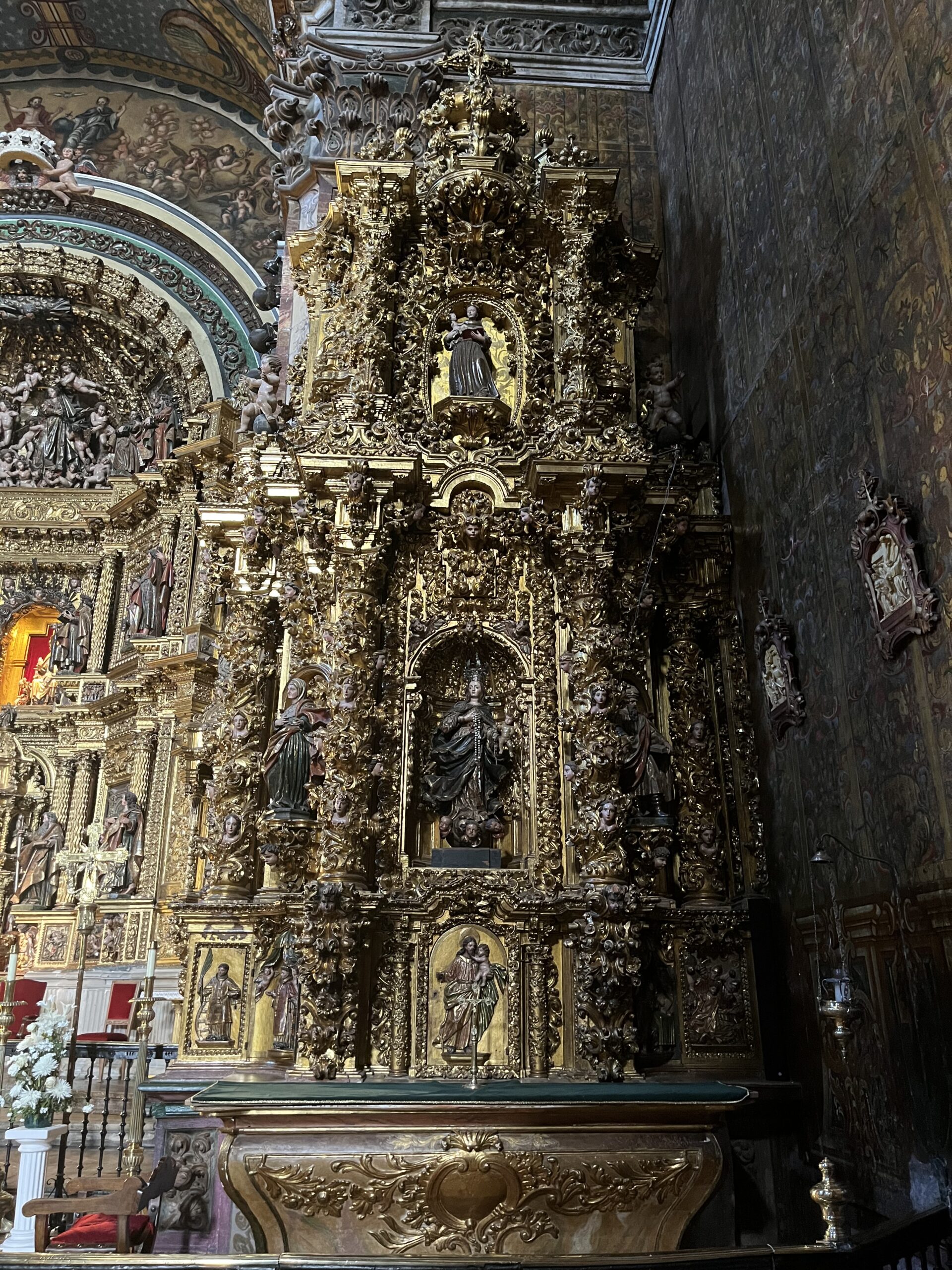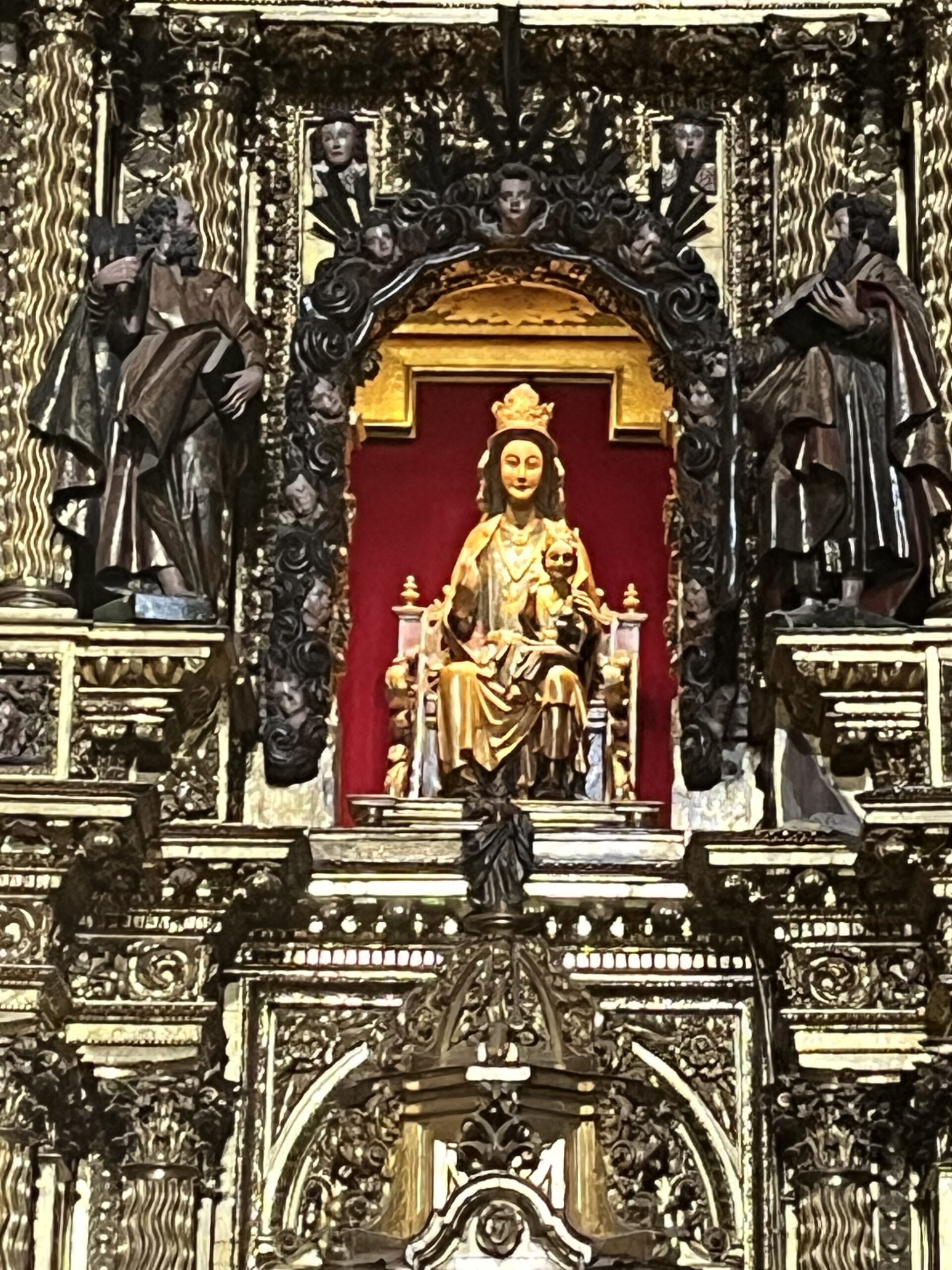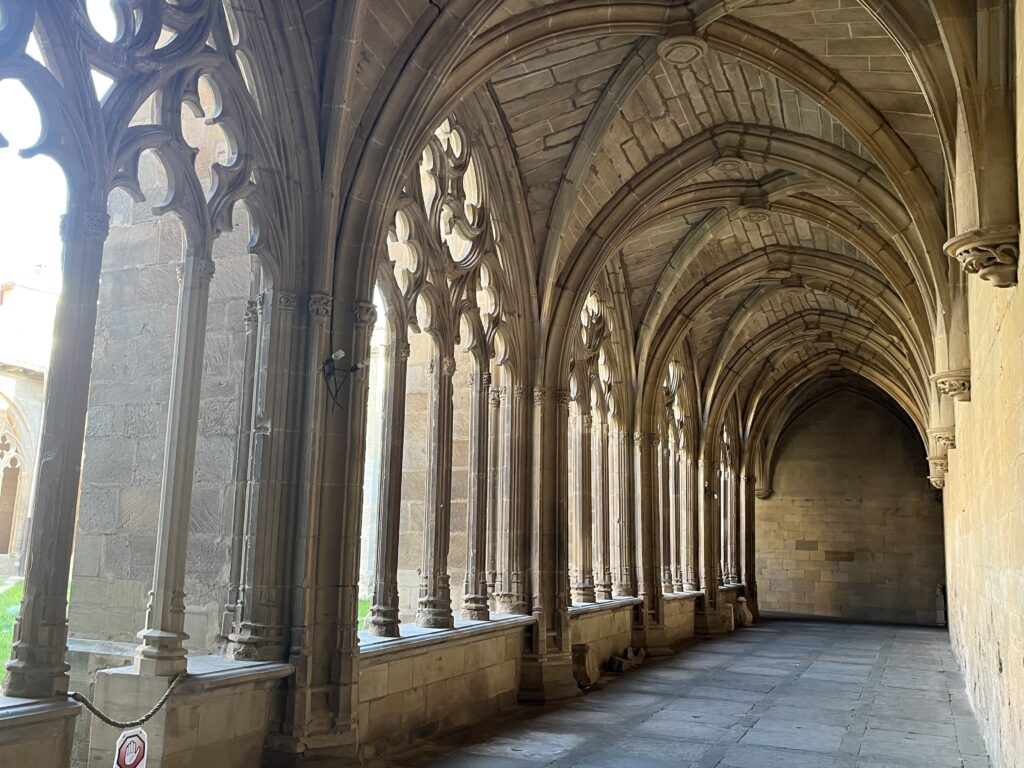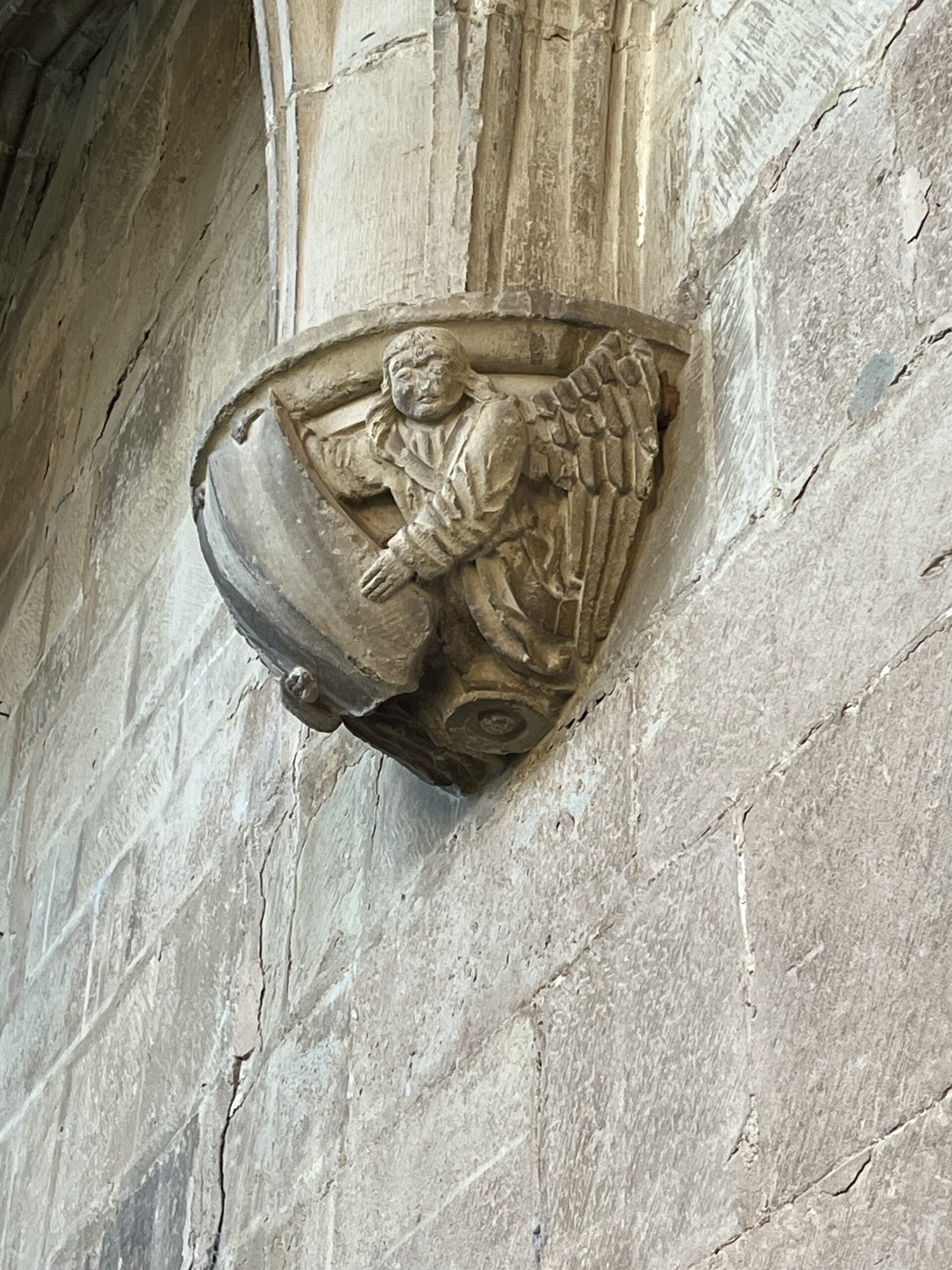Via Podiensis: Forty Days, and a Reflection
Today was my 40th day walking on this pilgrimage. It seems a significant day, though the actual walking portion was not too long.
I was up and packed fairly early, but breakfast options along the route were a little limited. I left to hit a nearby panderia, but they didn’t open until 7 AM. It turns out that this was fine, because it was still pretty dark at that point, and as I’ve said before I would prefer to walk after daybreak in Spain.
I met some pilgrims at breakfast, Allison from Wisconsin and her niece Morgan from Montana. In fact, I met Allison yesterday when we shared a washing machine and then randomly met again at the San Pedro cloisters.
After breakfast, it was an extended set of road and sidewalk walking out of the urban area of Estella all the way to the monastery of Irache and its famous wine fountain.
On the way, we stopped by the shop of a local blacksmith who, in addition to the usual hinges and hooks, sells assorted metal pieces related to the Camino. I plunked down my €5 and bought a hand-forged shell necklace to replace the earlier one that I lost in France.
By 8 AM, we arrived at the fountain and briefly ran into both Luciano and Sophie there.
So yes, there is a public fountain on the Camino at Irache with two spigots, one for water and one for wine.
Legend has it that at one point in the Middle Ages, an Italian noblewoman who felt sorry for the hard lot of the pilgrims endowed a series of fountains on the Camino in Spain with one spigot for water and one spigot for wine. This is the only remaining one, at the Bodegas Irache.
It was once operated by the nearby monastery. In the late nineteenth century, the monastery’s vineyards and bodegas were sold to a local company with the proviso that they maintain the fountain for pilgrims.
Eight o’clock in the morning is not optimal for drinking wine, but how can you refuse to honour a pilgrim tradition?
The monastery was, predictably, locked. I prayed outside the doors for the intentions of the Camino anyway. Afterwards the Camino moved on to a rough gravel road.
My fleece came off a little later at about 8:30 AM, and I did my by now usual wrap around and put the pack over the top thing to help save my hips.
To the distance, off to the right, I could see a line of cliffs that marked a very distinct ridgeline above the valley through which we were walking. On the left side meanwhile was suburban housing.
Shortly thereafter, we returned to the sidewalks and eventually suburban roadwalking. Fortunately, it didn’t last long, and the Camino followed a gravel path out into the farmland and trees. We could soon see our midpoint of the day, the great conical hill of Monjardín with its ruined castle atop.
Arrived in the village of Azqueta just before 9:30, and just in time for second breakfast. We left just before 10. You might notice that my breaks have gotten longer over the past few days. This is just me, trying to consume sufficient calories.
Once out of the village, the Camino continued along a rough sort of dirt and rock trail up and down hills as we passed by Monjardín, with its great ruined castle staring down on us.
We arrived in the village at the base of the castle hill, Villamayor de Monjardín, at about 10:20 AM. The village church, of which I have such fond memories from ten years ago, was locked. And not just locked, locked with two padlocks.
After the village, it was over hill and dale on a relatively easy gravel road. Allison and I spent the time talking as pilgrims do.
After seemingly endless miles of grassland, at about noon we came upon “Pilgrims’ Oasis”, a food truck in the middle of nowhere. I got a glass of fresh squeezed orange juice – well, two glasses of orange juice – and a Snickers bar. Positively divine.
Less than ten minutes later, it was back on the Way.
The terrain was seemingly endless rolling plains. We passed hawthorns with butterflies swirling around, numerous other bushes and the occasional stand of trees. At one memorable point, we had a field of brilliant emerald grass to one side, and a grove of olive trees to the other.
We walked into Los Arcos before 1:20 PM. This place always reminds me of old western town when I walk in, but it quickly morphs into a typical medieval Camino town as you go further, with one main street that is, in fact, the Camino de Santiago.
After checking into one of my favourite albergues, the Fuente Casa de Austria, and the usual pilgrim chores, I ate half an empanada from the local bakery and chatted with some of the pilgrims there.
Then it was off to explore the little village.
After visiting with some pilgrims in the square, including Ian and Patricia from Canada, who I met while waiting in line at the Pilgrim Office in Saint-Jean, and the three sisters I dubbed April, May, and June, also back in Saint-Jean, I proceeded to the village church.
But not just any village church, oh no! This was the explosion of Baroque that is the magnificent church of Santa María de las Asunción, built over the course of six hundred years, from the 12th through 18th centuries.
I have no idea how to sum up this church. The centerpiece of the retablo over the high altar is an early medieval Virgin and Child, probably from the 11th or 12th century. But it is surrounded by a Baroque masterpiece featuring, depending on how you count them, between 18 and 22 other statues (not counting cherubs), at least half of which are life size, not to mention four Biblical scenes in high relief. And that’s just the high altar.
It’s really difficult for me to get my head wrapped around the profusion of detail, artistry, and sheer exuberance of this place. Hopefully the photos will do it some justice.
I prayed Vespers here for the intentions of the Camino and the Church in the Archdiocese of Seattle.
Why do I keep coming back to the Camino? A Short Reflection
At the conclusion of my 40th day walking on pilgrimage, I thought it might be useful to examine the question of why. Why do I walk the Camino, and why do I keep coming back?
The simplest reason is that the Camino calls me, but this isn’t really a satisfying explanation for most people.
There’s a saying you hear sometimes on the Camino Francés, “visit Spain; meet the world”. This is a good place to begin.
The Camino challenges me: physically, mentally, emotionally, spiritually.
It broadens my horizons, obviously culturally, but also in terms of the personalities and beliefs of people I encounter, their spirituality and their philosophy. It expands my food horizons and my knowledge of history and geography.
It improves my decision making (usually) and it forces me into a trust and reliance on God that is all too easy to forget in our technologically sophisticated and self-centered culture.
It teaches me through meeting people and through experiencing firsthand the art, architecture, cultural history, and popular devotions just what the faith has meant and still means to people living in places where it has been rooted for millennia.
It helps to teach me to think with the Church, not in days or years, but in generations and centuries. This last part, while it may seem a little lofty or far-fetched, is actually to me one of the more important lessons that the Camino offers me almost every day. Yes, this particular Romanesque church is shabby and smells vaguely of mildew, but it has been offering solace and the sacramental life to parishioners and to pilgrims for nine hundred years.
The psalms tell us “put not your trust in princes”, and by this it does not just mean secular rulers, but also the fads and fashions of the given moment, whether those are secular or religious.
Place your trust in the Lord, and Him alone. Of course people will fail you. They are people, after all. Think of how many times you yourself fail every day.
Finally, the Camino helps to teach me to pay attention. Pay attention, not just to the natural world around, not just where to place your foot to avoid that patch of mud, but also and especially to the miracles that God is pleased to visit upon us every day.
God is present to us, not just in our consolations, but also in our darkness. He is working, though we may not understand the how or the why of it. Trust in His work.
In short, the Camino is an excellent teacher of the sacramental worldview, if you let it teach you. I periodically return to the Camino to remind me of this, to get it into my bones.
Come to the Camino, and be reminded of the wonders of God’s sacramental created order.
Date: 26 September 2023
Place: Los Arcos
Today started: Estella
Today’s Photos!
